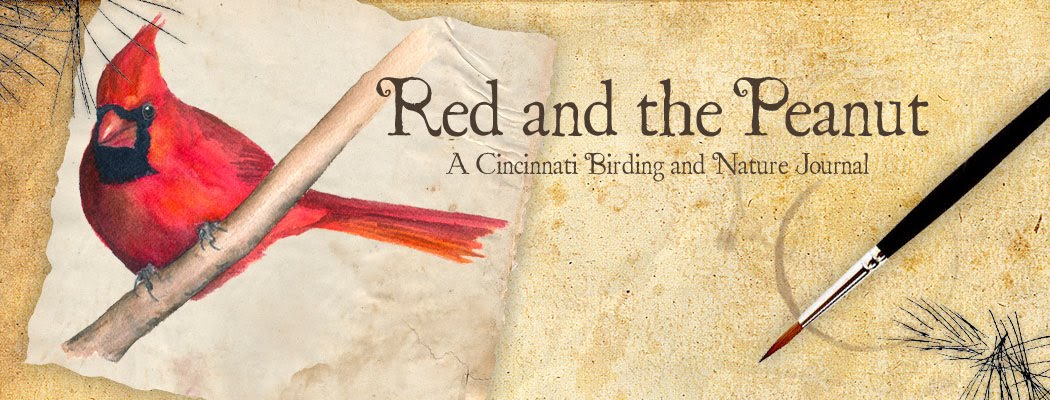After meeting up at Adams Lake State Park, our mustard-hunting group car pooled to a small cedar glade prairie where a rare mustard was known to grow. This was all new to me. I had never searched for a tiny mustard, and I had never been to a cedar glade prairie, so I really didn't know what to expect. Jim (our expedition leader and author of
Ohio Birds and Biodiversity) talked about the glade, explaining its unique habitat is a result of dolomitic limestone bedrock located just under the surface of the soil. The shallow soil, and in some locations exposed limestone, prevent large trees from growing, which creates the prairie habitat. "Cedar" in the name comes from the fact eastern red cedars (Juniperis virginiana) are located throughout the glade, growing in cracks in the bedrock. It didn't take Jim and the other experienced wildflower hunters long to find the first mustard, and soon we were all tiptoeing through the glade, searching out these tiny plants. I was amazed at how quickly I fell in love with these diminutive wonders...
...a tiny blossom of Michaux's Gladecress, Leavenworthia uniflora, stands tightly furled against the chill of the overcast spring morning.

...raindrops from an earlier shower cling to its tender petals.

Until the sun's rays warm the flower causing the sap to flow more rapidly through the leaves, stems and blossoms, the petals will remain closed, protecting the pollen from being washed away by chill rain and nighttime dew formation.
I vaguely remembered how the sun's warmth coaxes blossoms open, but I wanted a refresher. I found an article called
"The Sleep of Plants," by Arabella B. Buckley--Youth's Companion, in the magazine
"Current Literature," Volume V, July - December, 1890, pg 470. I loved the poetic and beautiful language from that earlier time...and the way the author explained how a flower "wakes up." (
Click here for the entire article.) Simplified, as the sun warms the flower, and the sap starts to flow more forcefully through the vessels in the petal, the skin on the inside of the petal, which has been curled up tightly through the night and therefore is still warm and pliable, starts to expand, slowly pushing the blossom open. The skin on the outside of the petal, which has been exposed to the cold all night, is still rigid and inflexible. The petals will continue to push open until the tension on the inside surface of the petal is equal to that on the outside surface of the petal.

...a tiny glimpse of the bright yellow center waiting to burst forth. The sun never did break through the clouds while we were in the cedar glade, so I didn't get to see this little beauty fully open. I guess I'll just have to try again next year!

The leaves of Leavenworthia uniflora look fairly large in this macro photo, but they aren't! They are just a little bigger than a quarter.

...a teeny, tiny orange and white leafhopper popped onto a small dead stalk next to the Leavenworthia uniflora. If I had not been on the ground studying the diminutive mustard, I never would have seen this beautiful little insect!
































